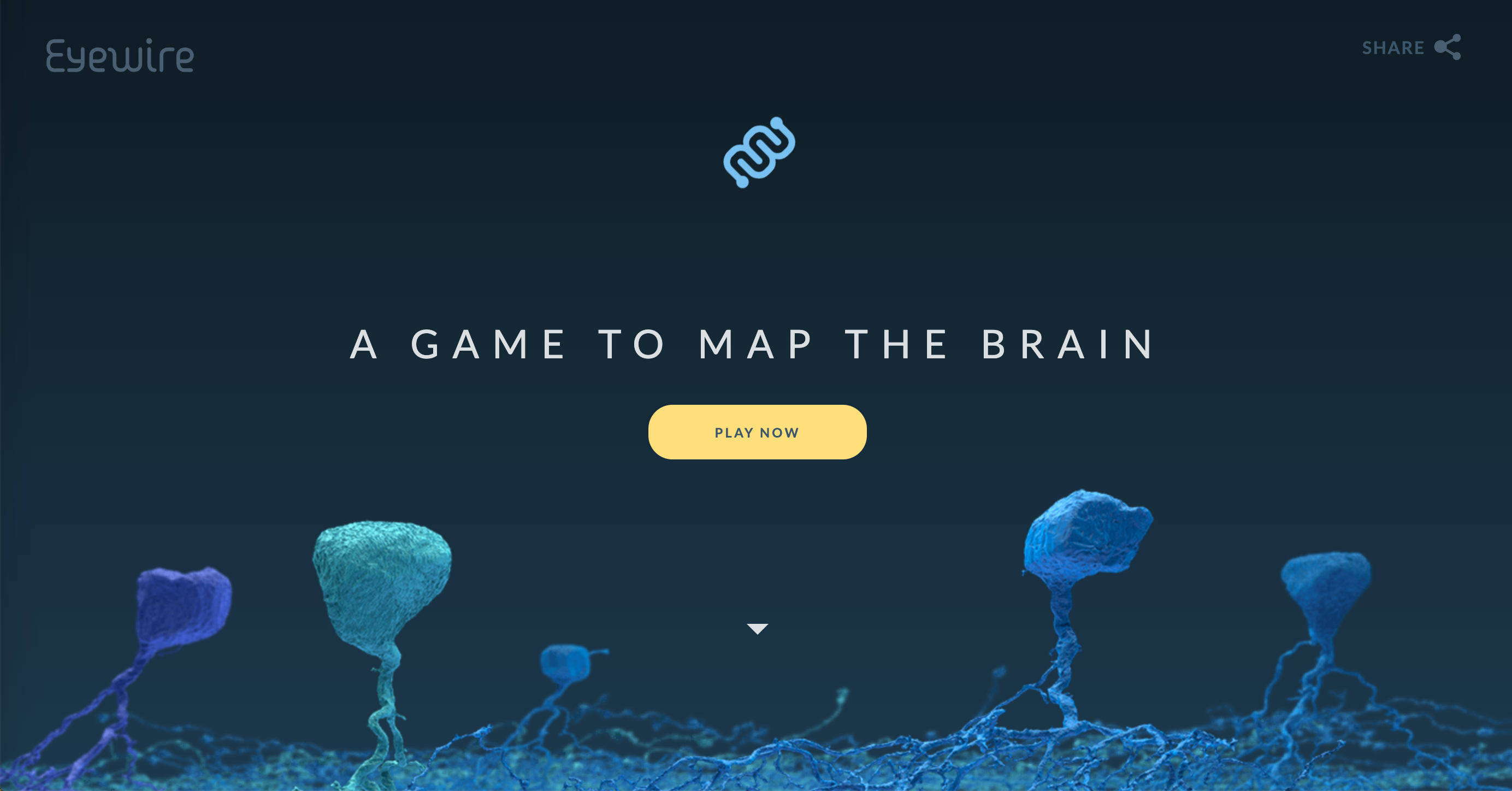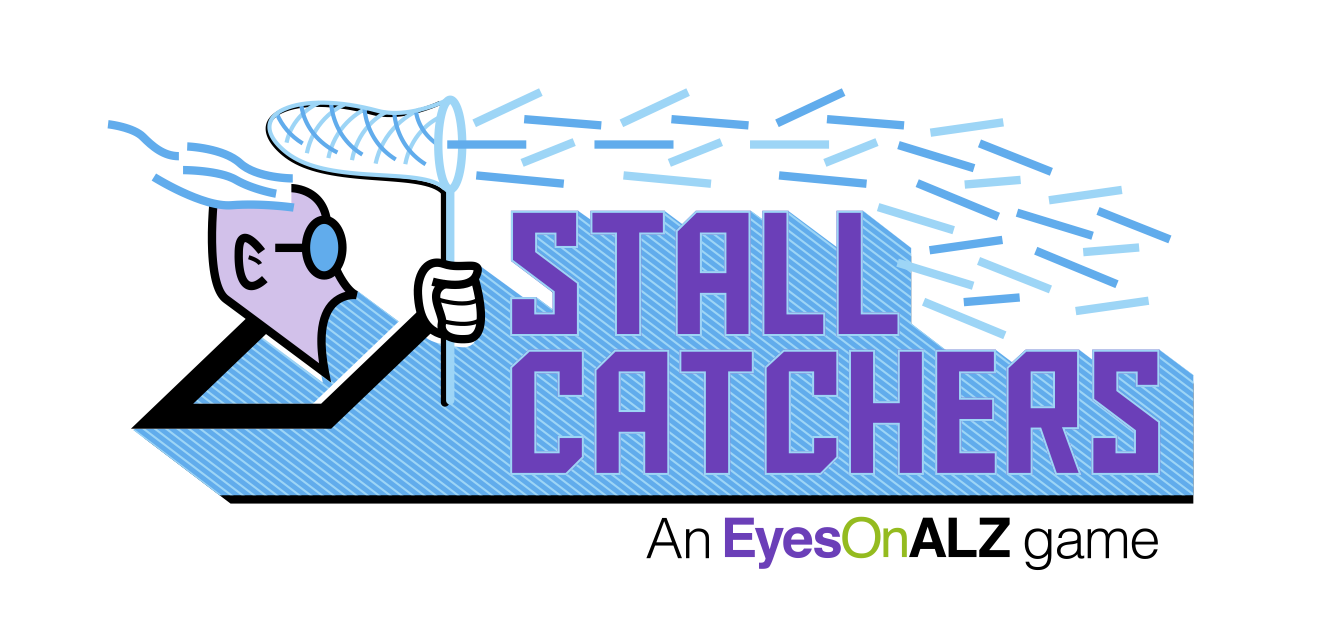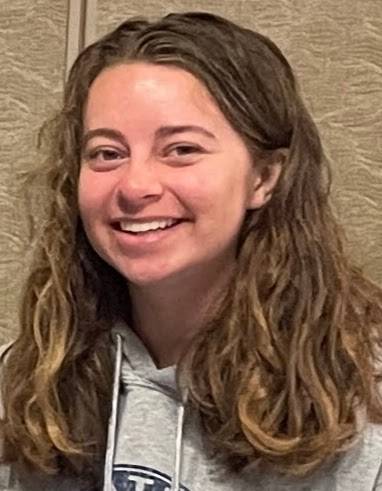Exploring Neuro Citizen Science
Engage middle school students in citizen science!
This set of two lessons will introduce middle school students to the eye, the brain and diseases of the nervous system. Students will take part in two online citizen science activities to better understand the work that neuroscientists engage in, and thus become neuroscientists themselves!
No prior knowledge or experience is required of the instructor. Suggested materials are linked below. Groups will need a device with Internet access (phone, tablet, Chromebook, laptop, or desktop) to participate in the online citizen science projects. If possible, consider making instructor accounts with preset passwords ahead of time and assign these to students so that they do not have to make their own accounts.
You can also download these two lessons as a PDF (same as the content below)
SUGGESTED GRADE LEVEL: Middle School
Introductory video
The introductory video by the author of this project, Chloe Moreland, introduces these two lessons and the citizen science projects. We highly recommend viewing this video [14:34] prior to undertaking the projects.
Lesson 1: Eye Wire

The goal of this lesson and activity is to introduce students to the anatomy of the eye and how the eye connects to the brain so that we can understand what we are seeing. They will also have an opportunity to participate in citizen science. Students will first be shown some short videos and given a mini-lesson so that they have a basic understanding of the eye and the visual system. Then they will play a game in teams and work on creating a map of the retina by making connections between retinal neurons through EyeWire, which is a citizen science project on SciStarter. Coloring pages, word searches, and a memory game are available as an alternative to the activity or when they are finished.
Materials Needed
- Eye models – approx. $19 each (we recommend 2 for a group of 20 students)
- 2 memory games –approx.. $15
- Instructor device with Internet access and ideally a projector to show introductory videos
- Student devices with Internet access (iPad, Chromebooks, computers, etc.), ideally one per student. Smart phones will work, but the activity is much easier on a device with a bigger screen.
- Coloring pages and word searches (one per student; print more if needed) – see below
- Crayons, colored pencils, markers, etc.
Educator Preparation
- Gather the appropriate number of coloring pages and word searches (see links below; copy more if needed)
- Familiarize yourself with the lesson content and the online citizen science project called EyeWire so that you will be able to help the students when they are playing the game.
Procedure
Steps, each with a time allotment
- Start with coloring pages of the eye or brain. Pass out the coloring pages and colored pencils. During this stage, pass around the eye models so that students get the opportunity to explore the structure of the eye.
- Open by talking about what citizen science is (if same group, this introduction can be skipped for Lesson 2)
Today, we will be participating in citizen science. Citizen science is when scientists and people who are curious and care about science work together to make a difference. There are a lot of challenges and unanswered questions in the world today, like preventing diseases, protecting endan- gered species, and helping with medical research. Scientists are working hard to create solutions to these problems, but they need our help. Science needs more eyes, ears, and perspectives than any scientist possesses. A citizen science project can involve one person or millions of people all working towards a common goal. You can help, too, just by playing games created by scientists.
We will be playing a game related to the neurons connected to the eye, which is the reason that we are able to see things and understand what we are seeing.
Play the video about neurons to explain how the brain communicates with other regions and how we learn: (4:39 minutes)
- Play the video about the eye. Have the kids follow along by locating the parts of the eye being explained in the video with the parts of the eye on their models: (5:09 minutes)
- Further explain what the visual pathway is:
The visual pathway is how our brain processes what we see. Once light is sensed and stored by the rods and cones (which are types of cells in the eye that sense the energy in light), it sends that information to the very back of the brain to a place called the visual cortex. This is where the images that we see get processed so that we can understand what is happening in the world around us. There are six layers in the visual cortex that process different things like motion, form, color, and depth perception.
The information from the retina, which is in the back inside of the eye, travels to the visual cortex through connections between neurons. Eye Wire is a game that helps researchers create a map of the human brain and all of its connections between neurons. They start this process by first creating a map of the retina.
Players like you help map the connections between retinal neurons, which include rods and cones. This helps researchers understand how neurons process infor- mation. Eye Wire researchers hope that their work can lead to progress in blindness therapies, the development of retinal prosthetics, and other benefits for people who have problems with their vision.
- Have the kids go to: https://scistarter.org/eyewire Click “visit.” Then click “Continue to Eye wire.” Help the kids set up accounts and get started! See above about making accounts
- As an alternative, or if they are done playing Eye Wire, they can do more coloring pages, word hunts, play iSpy, or play the memory game.
Wrap up / Closure / Cleanup
Have the kids log out of their accounts and put away their devices, colored pencils/markers and other items. As an “outro” go through these optical illusions and describe that although the eye sends information to the brain, the brain sometimes fills in missing information that distorts our perceptions: https://www.creativebloq.com/features/optical-illusions
Informational sources
Coloring pages
1. Optical illusions: https://www.supercoloring.com/ coloring-pages/optical-illusion-7
2. Eye word hunt: https://wordmint.com/ public_puzzles/43028
3. Eye: https://www.crayola.com/free-coloring-pages/ print/human-eye-coloring-page/
Lesson 2: Stall Catchers and How We Can All Fight Alzheimer’s Disease

The goal of this lesson and activity is to give students an introduction to Alzheimer’s Disease and to offer them the opportunity to participate in citizen science [see definition below, under procedure]. Students will first be shown some short videos and given a mini-lesson so that they under- stand more about citizen science, memory, and Alzheimer’s Disease.
Then they will play a game, and teams will work together to identify “stalls” in the brains that contribute to Alzheimer’s Disease. This activity is a citizen science project on SciStarter. Coloring pages, word searches, and a memory game are available as an alternative to the online activity or for students to complete when they are finished.
Materials Needed
- 2 brain models – approx. $20 each - (we recommend 2 for a group of 20 students)
- 2 memory games - approx.. $15 each (same as above)
- Instructor device with Internet access and ideally a projector to show introductory videos
- Student devices with Internet access (iPad, Chromebooks, computers, etc.), ideally one per student. Smart phones will work, but the activity is much easier on a device with a bigger screen.
- Coloring pages and word searches (one per student; print more if needed) – see below
- Crayons, colored pencils, markers, etc.
Educator Preparation
- Gather the appropriate number of coloring pages and word searches (copy more if needed)
- Familiarize yourself with the lesson content and—if participating in the online citizen science project, the project called StallCatchers -- so that you will be able to help the students when they are playing the game.
Procedure
- Start with coloring pages of the brain. Pass out the coloring pages and colored pencils, crayons or markers. During this stage, pass around the brain models so that students get the opportunity to explore the structure of the brain. (5 minutes)
- Open by talking about what citizen science is (5 minutes) Skip if with the same group as Lesson 1:
Today, we will be participating in citizen science. Citizen science is when scientists and people who are curious and care about science work together to make a difference. There are a lot of challenges and unanswered questions in the world today, like preventing diseases, protecting endangered species, and helping with medical research. Scientists are working hard to create solutions to these problems, but they need our help. Science needs more eyes, ears, and perspectives than any scientist possesses. A citizen science project can involve one person or millions of people all working towards a common goal. You can help, too, just by playing games created by scientists.
We will be playing a game related to Alzheimer's Disease, which is a disease that affects someone’s memory.
- Show the video about memory: (2:30 minutes) and have the kids share one of their favorite memories with a friend.
- Show the video about Alzheimer's disease: (5:30 minutes)
- Further explain what Alzheimer's disease is:
Memory problems are the first sign of Alzheimer’s Disease. The part of the brain that stores memories, the hippocampus, is damaged. (Show the kids where the hippocampus is on the brain model). This part of the brain is affected by the tangles and plaques (which are causedby the misfolded proteins and fibers in the second video) that cause loss of connections in the brain. This makes it hard for different parts of the brain to communicate with each other, so the brain gets confused and can’t remember things. As brain cells—also called neurons-- die throughout the brain, the connections between parts of the brain break down and the brain gets smaller.
As Alzheimer's worsens, people experience more memory loss and other brain problems. These problems can include wandering and getting lost, repeating the same question, taking a long time to do simple, normal tasks, and changes in their personality. They even have a hard time recognizing their family and friends.
Today, there is no treatment for Alzheimer’s, but many scientists are studying ways to help people who have this disease, and they need your help to do it! One of the signs of Alzheimer’s disease is less blood flowing to the brain. Just like we need food to survive, our neurons need nutrients, too, which they get from our blood. If blood can’t reach them, then the neurons will die.
Some researchers at Cornell University are studying why blood flow to the brain becomes reduced. They recently studied the brains of mice and discovered that stalls, which are clogged blood vessels in the brain, are causing this blood flow to go down. By reducing the number of stalls (clogged blood vessels), the lab was able to restore memory in the mice and reduce their other cognitive symptoms.
To fully understand how stalls are contributing to Alzheimer’s and to discover potential treatments, researchers need to look at lots of data. The researchers need your keen eyes for that - even the most powerful computers can’t sort through all of that data accurately. Without the help of many people, this process could take decades.
With your help, we could potentially find an effective treatment for Alzheimer’s Disease in just a few years – quick enough to make a difference in the lives of people who have the disease now.
- Play this video explaining stalls
- Have the kids go to https://scistarter.org/ stall-catchers-by-eyesonalz
Click “visit.” Then click “Continue to Stall Catchers.” - Then play the introduction video:
Help the kids set up accounts and get started! If they have a gmail account, they can use that to register, or you can make an instructor or classroom account for them to use. - As an alternative, or if students are done playing Stall Catchers, they can do more coloring pages, word hunts, or play the memory game.
Wrap Up / Closure / Cleanup
Have the kids log out of their SciStarter accounts and put away their devices and other items. Ask the kids to share one thing that they learned in their group.
Informational Sources
- Alzheimer's Disease fact sheet
- What happens to the brain in Alzheimer's disease?
- https://scistarter.org/citizen-science
Coloring Pages
- Brain:https://coloringonly.com/pages/normal-hu- man-brain-coloring-page/
- Brain: https://www.supercoloring.com/coloring-pages/ human-brain-1
- Brain: https://margaretjessoppsyd.com/hornets-and-hip- pos/printables/
- Alzheimer’s Word Hunt: https://wordmint.com/public_puzzles/40456
- Alzheimer’s Word Hunt: https://wordmint.com/ public_puzzles/2954810
For more projects and information
Students who are interested in citizen science can check out scistarter.org for more projects
Author and funding

Chloe Moreland is from Snoqualmie, Washington, and graduated from MSU in 2023 with degrees in Cell Biology & Neuroscience and English. In her free time, she enjoys hiking, climbing, reading, and skiing.
In Spring 2022, in tandem with the SMRC, she received one of the seven seed grants awarded by MSU’s Outreach and Engagement Council to promote outreach and engagement between the university and the community. The project, entitled 'Engaging Montana Youth in Citizen Science' partners with the Montana Afterschool Alliance, Eagle Mount, and Aspiring Educators of MSU.
The grant supports the creation of adaptive and engaging techniques to communicate and involve MSU youth and young educators in citizen science. The main goal is to be more inclusive and create adaptive lessons involving citizen science for varied audiences while also allowing aspiring educators to gain teaching experience and expand their STE(A)M teaching tools.
Feedback
Do you have any suggestions or feedback on this project or other citizen science opportunities? Please email us at [email protected]
You can also visit our website of the Montana Citizen Science Network and subscribe to our quarterly newsletter.
